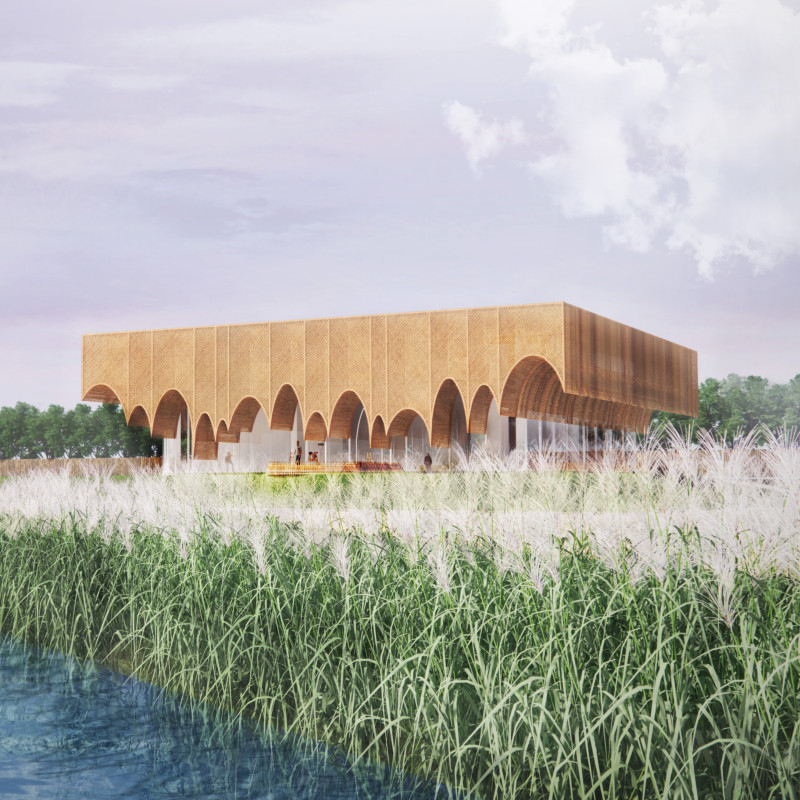5 key facts about this project
The Al Whatba Wetlands visitor center is designed to connect visitors with the rich ecosystem of the area while highlighting the elegance of flamingos. Located in an expansive wetland habitat, the center serves as an educational resource and a gathering space for people interested in learning about local wildlife. The overall design focuses on fluid movement and the interaction between nature and the built environment.
Architecture Concept
The building features a light and transparent base that lifts it above the water, creating the impression that it floats. This design choice allows for a subtle integration with the landscape, minimizing the structure's impact on the natural surroundings. The arrangement of spaces encourages exploration, mirroring how visitors might navigate through the wetlands. Large open areas and cozy, enclosed sections work together to create a rich experience.
Spatial Dynamics
As visitors move through the center, they encounter a variety of spatial arrangements that create both openness and intimacy. The wide spaces provide broad views of the wetlands, inviting people to absorb the surroundings, while the tighter areas foster a sense of comfort. This thoughtful spatial organization helps simulate an adventure through the wetlands, deepening the connection between visitors and nature.
Lighting and Atmosphere
Natural light plays a significant role in creating a welcoming atmosphere within the center. Sunlight filters through various architectural elements, changing the interior ambiance throughout the day and seasons. This careful use of light enhances the visual experience and strengthens the link to the wetlands, allowing visitors to feel more engaged with their environment.
Material Usage
Reed, a common wetland plant known for its strength and insulation properties, is utilized in the design. This choice supports the sustainable goals of the visitor center, providing effective temperature regulation while blending with the natural landscape. The inclusion of reed not only improves the overall functionality of the center but also reflects a commitment to environmental harmony.
A notable feature of the design is the roof, which creates the feeling of floating above the water's surface. It mirrors the poise of a flamingo standing gracefully on one leg. This element captures the essence of the visitor center while reinforcing the connection to the unique ecosystem of the wetlands.
























































